- Category
- War in Ukraine
Russian Military Builders, an Extension of and an Efficient Tool for the Settler Colonial State
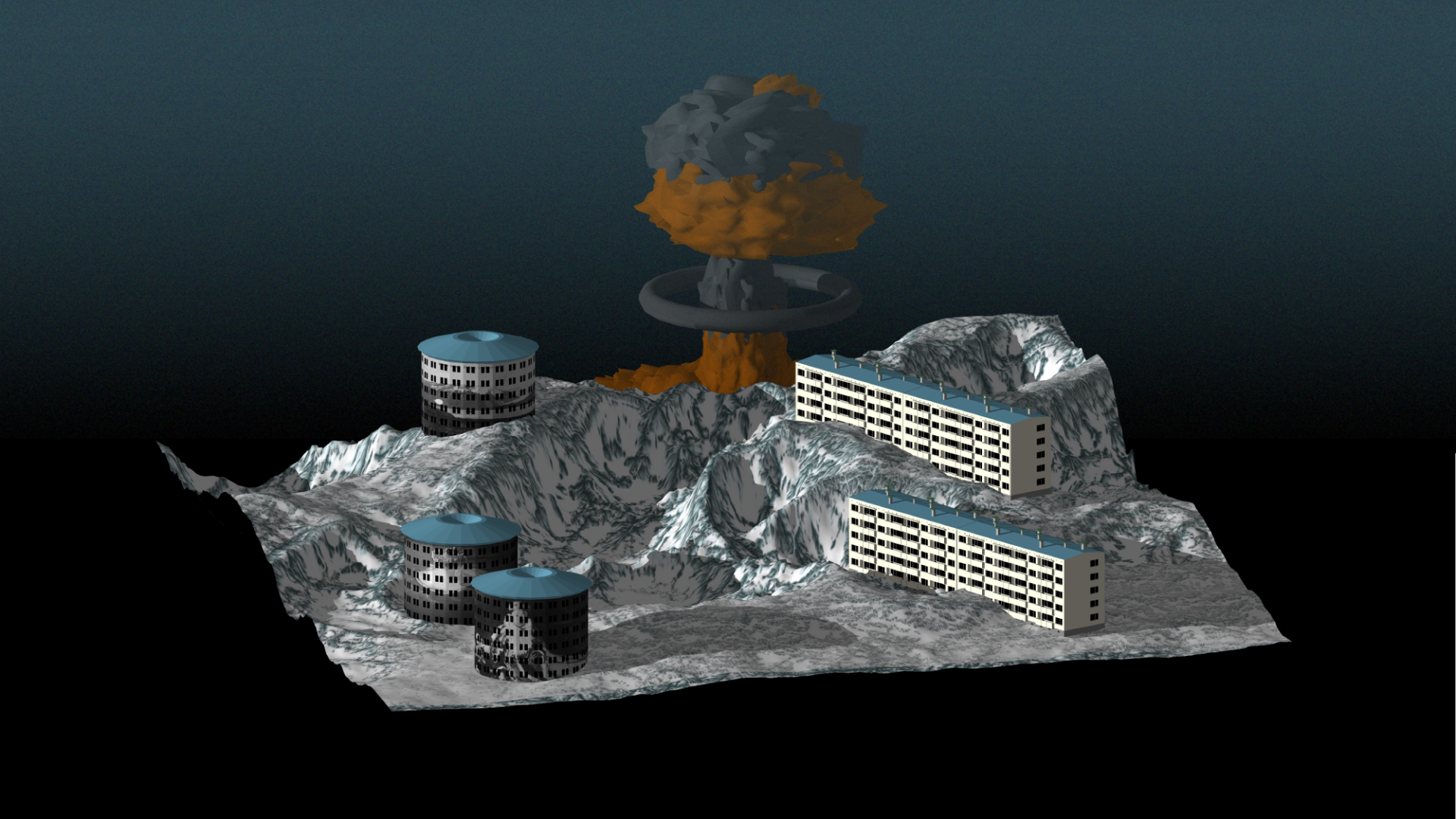
Russia, one of the largest settler colonial states still standing, has refined one of the most effective instruments for advancing its territorial ambitions: the Military Builders.
What do you think of when you hear of settler colonialism? Perhaps you think of genocides, invasions, erasure, and ethnic cleansing. Maybe you think of deportations, dispossession, forced evictions, and kidnapping.
Or you might think of occupations and the brutality of the carceral infrastructures of the occupying state. The installation of monuments and other colonial heritage markers might come to mind, as might the waves of incoming settlers lining up to secure luxury property with a sea view.
What if we told you that Russia, one of the largest settler colonial states still standing, has developed one of the most efficient tools for this? A weapon centuries in the making, designed to accelerate Russia’s settler colonial ambitions in Ukraine, the Caucasus, and beyond.
Enter the Military Builders, a structure within the Russian Ministry of Defence.
Who are the Military Builders?
Military Builders are workers experienced in both the army and construction. They are tasked with building military objects efficiently and extending the infrastructure of the settler colonial state with unparalleled speed, often atop the bodies still lying under the rubble.
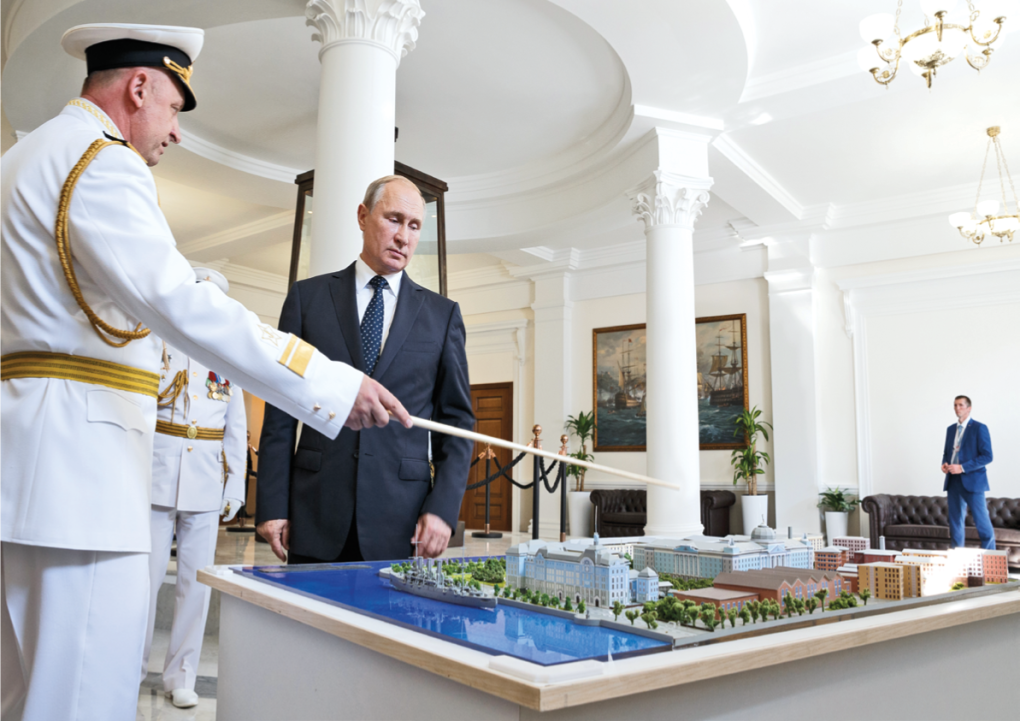
“Special construction crews” have existed since the times of Imperial Russia and have also played an important role in the Soviet Union’s military endeavors. The modern Military Builders emerged from military construction reforms in Russia during 2016-17. These reforms merged the independent Federal Agency of Special Construction with the Russian Ministry of Defense’s existing Military Construction Complex. This fusion created a more organized, singular, large-scale operation that would prove extremely valuable to Russia in its settler colonial ambitions and conquests.
One of the most notable creations of the Military Builders and their predecessors is the “military town.” Based on the information in the Military Builder journal of the Russian Ministry of Defense, military towns pop up in Russian colonies that need “reinforcing.” There are plenty of these all across countries that were once part of the Russian Empire and then the Soviet Union.

A typical complex includes military facilities tailored to Russian strategic interests, such as nuclear testing sites or military training bases. These installations are supplemented by residential buildings, schools, kindergartens, and medical facilities to accommodate military personnel and their families.
Such towns not solely serve as reinforcements for control and policing the colonies but are settlements of armed to-the-teeth settlers and soldiers. Over long periods, aside from the apparent psychological effects such militarised panopticons could have on a population, they also distill the national composition of the region.
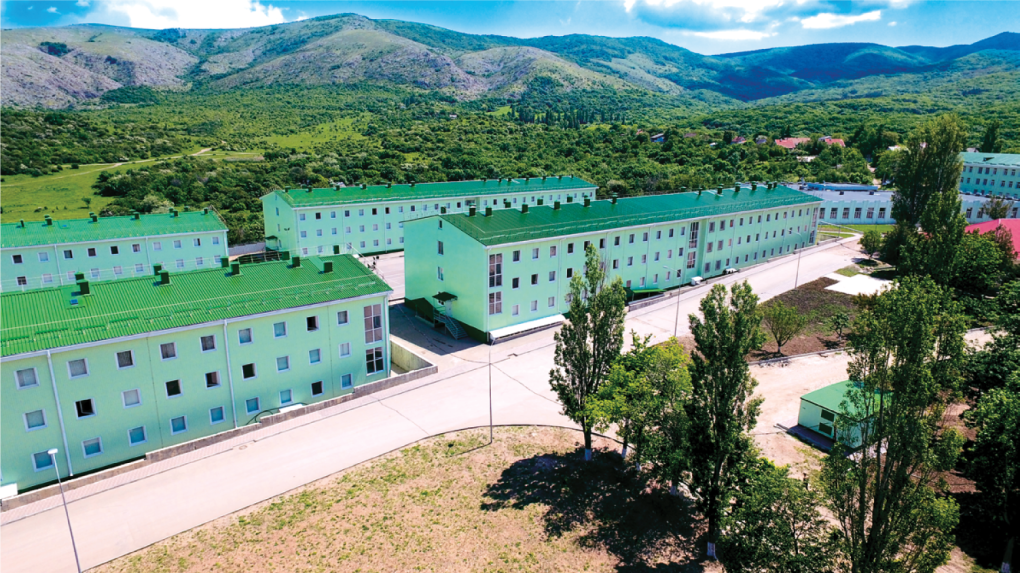
In Ukraine, Military Builders infiltrate cities with the occupying army and begin their work while the cities are still under siege. They cremate the bodies of murdered Ukrainians in mobile crematoriums while claiming to reconstruct the city for the benefit of its inhabitants.
They also hold dozens of conferences and forums yearly to recruit and promote their activities to the Russian youth. Such forums have workshops, lectures, and exhibitions from veterans and experts in the field, allowing hundreds of schoolchildren and students in higher education to become part of the settler colonial institution.

To better understand how the Russian MOD uses the Military Builders as a tool of their settler colonial machine, let’s look at three distinct projects they have worked on over the last decade: settlements in Novaya Zemlya, a new military town in occupied Chechnya, and a ‘history park’ in recently occupied Zaporizhia.
The Settlements on Novaya Zemlya
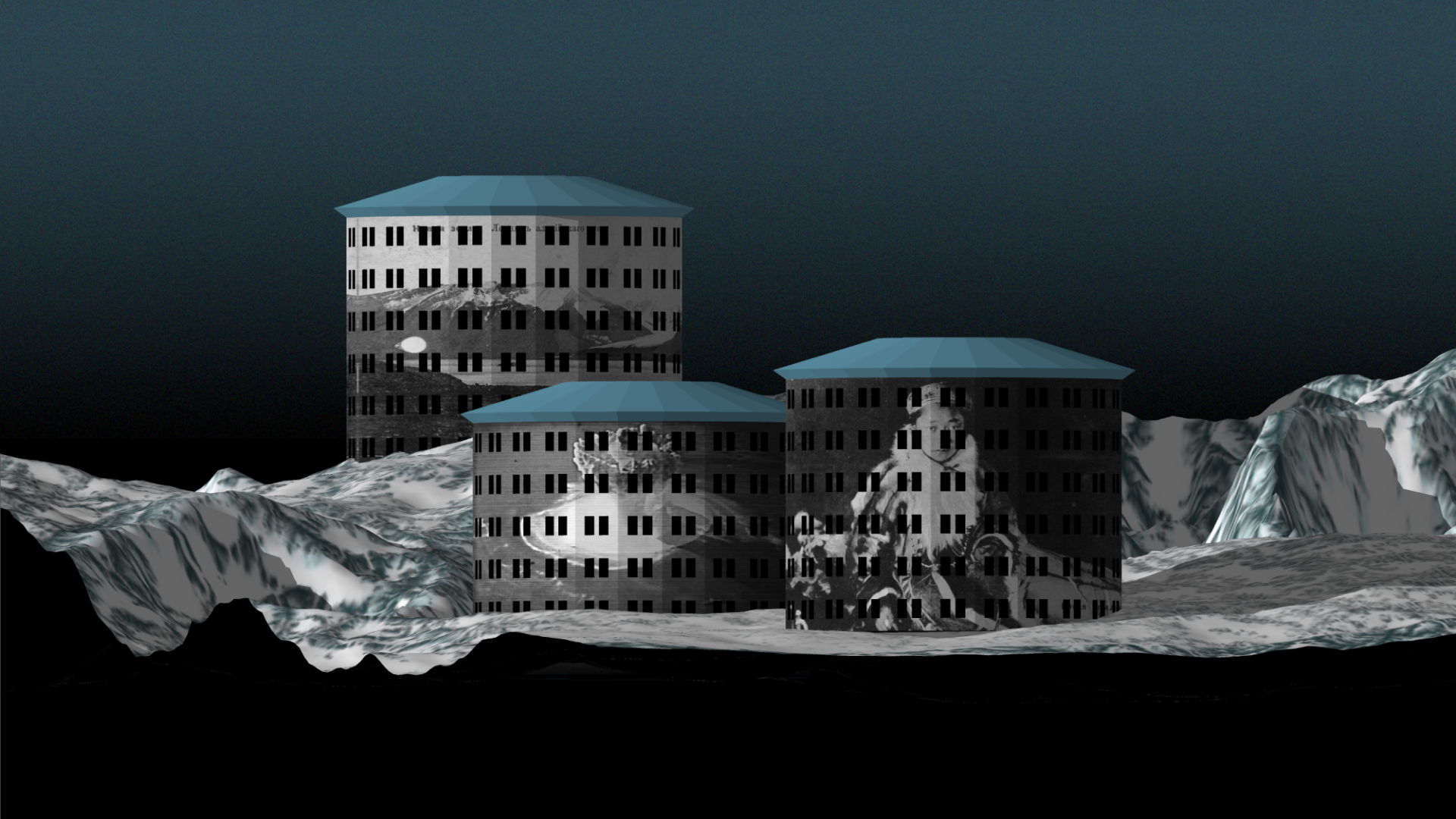
Novaya Zemlya is an archipelago in the Arctic Ocean, north of Russia. It consists of two main islands that were taken over by Russian colonialists in the 19th century and given a colonial Russian name that literally translates into English as “New Land.” During the Cold War, it became the site for many nuclear tests conducted by the Soviet Union. However, recently, it has become of interest to analysts and open-source researchers worldwide. The reason? The rapid construction that’s been taking place there by Russian Military Builders. Many pointed to the fact that this could indicate Russia’s renewed interest in nuclear tests on Novaya Zemlya again.
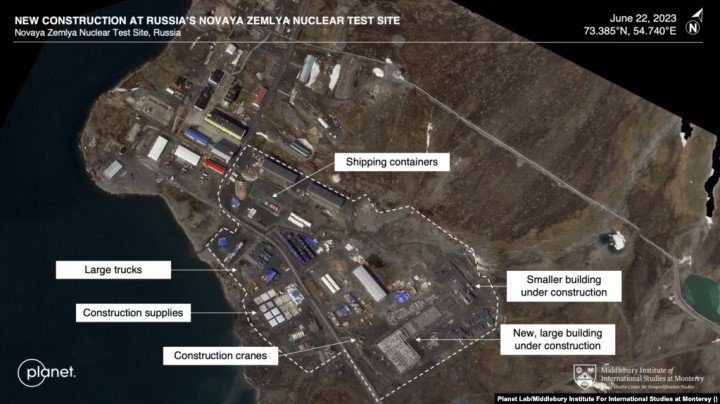
In 2021, the Russian TASS News Agency stated that the Russian MOD’s military construction crews have erected over 800 buildings in the Arctic since 2013, concentrating on the Novaya Zemlya archipelago. Those include schools, kindergartens, residential buildings, and military structures. They added that the Russian MOD had disclosed that the Military Builders were working on a fuel depot that would “fully satisfy the demand of a military town.”
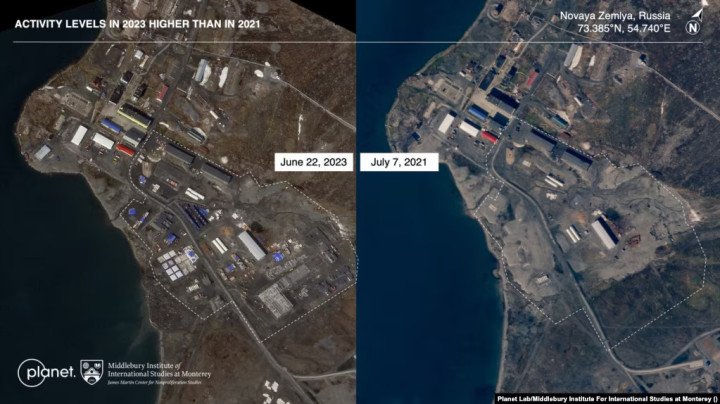
By 2023, RFE/RL highlighted that substantial progress had been made in this military town in Novaya Zemlya. Satellite imagery from the Middlebury Institute for International Studies showed a significant surge in construction activities on the archipelago in 2024.
What is clear is that the Russian Military builders have today acquired the position of the Russian colonialists of the past who came to the area a couple of centuries ago.
The first permanent settlements on Novaya Zemlya date to the late 19th century, when Russian colonialists tasked with reinforcing the control of the Russian Empire’s ‘territorial possessions’ dispossessed several Nenet families from elsewhere to form ‘test’ settlements on the archipelago. These indigenous people were forcibly relocated to harsh, uninhabitable lands.
The Nenets, indigenous to Siberia and primarily settled around the Ural Mountains, were used by 19th-century colonialists to test the viability of year-round habitation on the archipelago. Taken from their ancestral lands, they were moved to an environment with an extremely harsh climate, serving the Russian Empire’s ambitions to cement its Arctic claims.
Under the Soviet regime, the Nenets, like other Indigenous peoples of the Deep North, underwent forced sedentarization, collectivization, and folklorization. These policies stripped them of their traditional practices, such as reindeer husbandry and clan solidarity.
At the outset of the Cold War, the Nenets settlements in Novaya Zemlya were dispossessed once more, this time for the purposes of “nuclear testing.” Not even a hundred years had passed since their first forceful resettlement to the archipelago from their ancestral lands, and they had been moved again. This time away from the land they had been forced to move to.
The practice of continuous dispossession of Indigenous people of the ‘Deep North’ was standardized in the Soviet Union, as aside from using land for nuclear testing, the ‘Deep North’ was significant for the Soviets due to its extensive amount of unexploited oil, coal, and other natural minerals.
The practice is alive and well and has been perfected by Russia to a degree unseen elsewhere. The colonialists' position of reinforcing territorial control is now assumed by builders extending the infrastructure of the modern settler colonial state, the majority of whom are veterans ready to defend and expand their military towns with the regular military if needed.
Why build a military town in Chechnya now?

Amidst the full-scale invasion of Ukraine, Russia began fortifying its colonial presence in Chechnya. According to the Military Builder journal of the Russian Ministry of Defense, dated April 2023, a new 54-hectare military complex has been built there, encompassing over 50 objects for the settlement of the Russian military. Russia’s military builders are, again, the most immediate tools on the backs of which the settler colonial regime in the republic is strengthened and reinforced. But why now? To control and suppress?
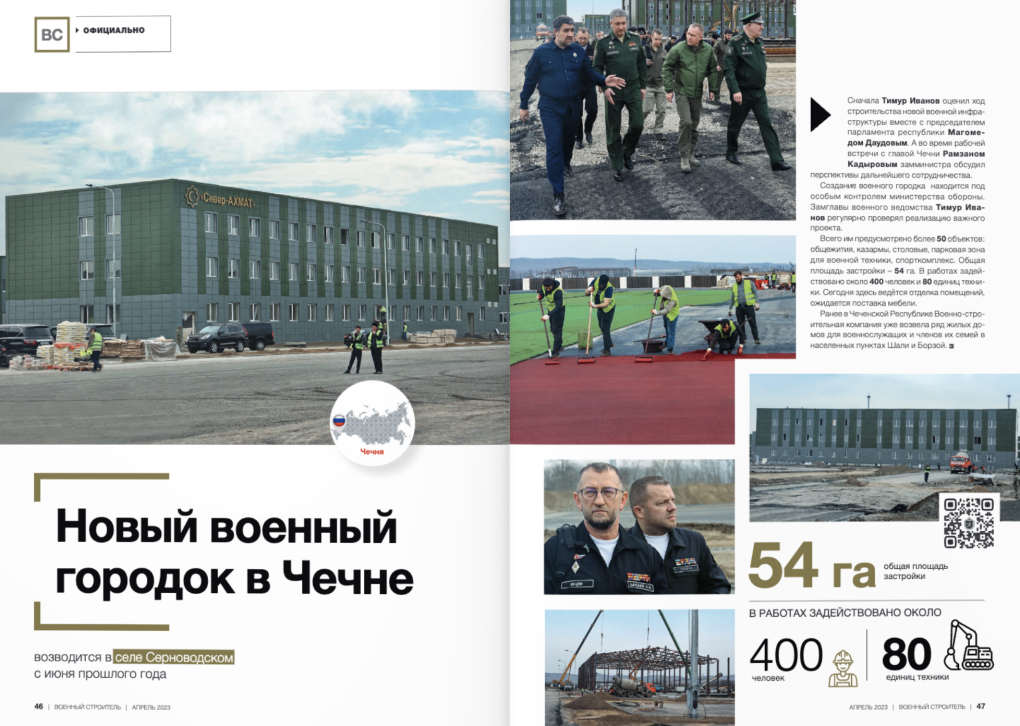
The history of the Russian oppression of the Chechen people is vast and takes root in the late 18th century, but we will only outline the very recent few developments. Mairbek Vatchagaev, a Chechen historian, posits that the contemporary image of Chechens as ‘the enemy’ of the Russian people was manufactured by the Communist regime.
February 23, 1944, is a date perhaps unknown to much of the world, yet for the Chechens and the Ingush, it is a tragic reminder of mass deportation from their ancestral lands. In a standard practice under Stalin’s rule, and just four months before the mass dispossession of the Crimean Tatar people, the Chechens and the Ingush were claimed to be fascist collaborators and were deported to Siberia. The claim itself, as per usual, was fabricated to the extreme as the Nazis, in their advance in the Caucasus, have never stepped foot in Chechnya.
Yet, as history and the present show, the claim of fascist collaboration was used by the Soviets—and now by the Russians—to cleanse indigenous people, settle in their lands, and commit genocide. In February of 1944, in a matter of a few days, up to 400,000 men, women, and children were loaded into cattle cars and taken away from their lands. The hundred or so men who managed to escape to the mountains were the base of the Chechen Insurgent movement against the Soviet regime until its disintegration.
Between November 1990 and November of 1991, the newly formed Chechen National Congress, which was an umbrella organization for the Chechen national movement, met on numerous occasions to put forward a plan for the independence of what would soon become the Chechen Republic of Ichkeria. The Congress gained widespread popularity and, in its fight for sovereignty, united the nationalist, democratic, Islamic, and environmental factions within Chechnya. Their combined struggle led to the overthrow of the Supreme Soviet and the election of Dzhokar Dudaev as president of the Republic on October 27th, 1991. On November 1st of 1991, the Chechen Republic of Ichkeria proclaimed independence.
The next three years were filled with an aggressive effort from the Kremlin to pacify and subdue the Republic, much like it has done in most of the other ethnically defined republics striving for sovereignty with its extractivist and manipulative treaties and trade agreements. Suffice to say, it did not work, and in November of 1994, with Yeltsin at the helm, Russia started its first war on the Chechen Republic of Ichkeria. The Russians failed in this colonial endeavor, as the Chechen guerilla warfare tactics proved too much for the agents of the empire, yet as always is the case when Russia does not get what it wants, a city was erased along with a big part of its inhabitants. The first Russian war on Chechnya destroyed Grozny and left around 27,000 civilians dead.
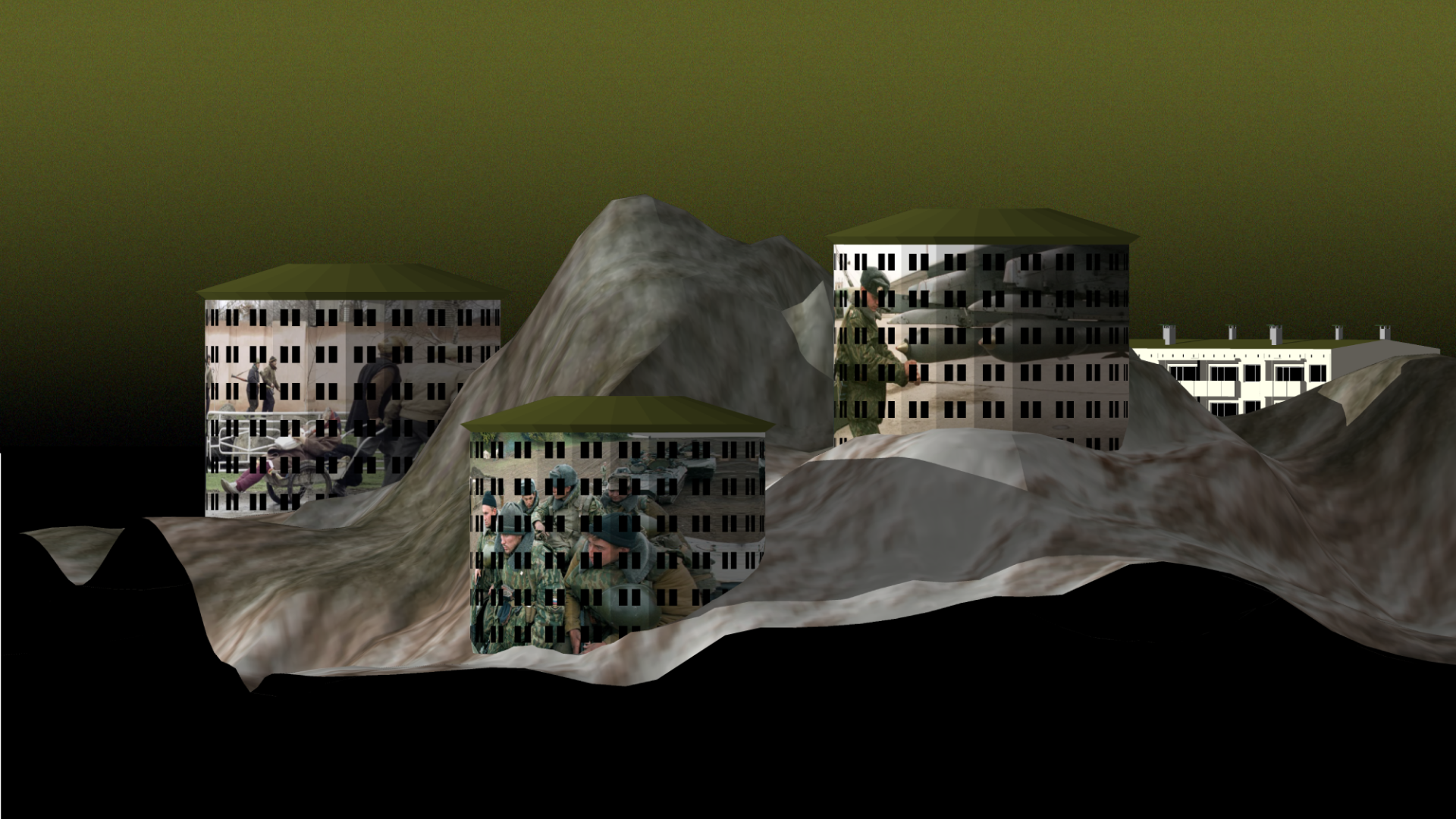
While Russia did not win the war, it did achieve its goal of partially destabilizing the newly independent Republic due to the extensive ruination of its infrastructures and mass murdering, and an exodus of civilians, which only intensified as Putin became the prime minister of Russia in 1999, and started the second Russian war on Chechnya.
The second war on Chechnya was one of the most brutal colonial wars in recent history, which officially lasted from 1999 to 2009. Yet, most of the damage was done in a few months up to the fall of Grozny in February of 2000 and the installation of the illegitimate pro-Russian leader Akhmad Kadyrov. The Russian forces, with certain pro-Russian fractions within Chechnya itself, erased Grozny off the map, scorching everyone and everything in their path to controlling the only remaining independent republic in the North Caucasus.
In the second war on Chechnya, Russia began using the tactic we now know all too well, first scorching the city by way of ballistic missiles and cluster munitions and then sending in ‘clean up squads’ to slaughter everyone not yet scorched from above. After the fall of Grozny and the installation of a Russian-backed government, throughout the early 2000s, Russians mass-murdered civilians and erased whole towns under the guise of finding out terrorists and disloyal insurgents. After the second ruination of Grozny, Putin’s ratings surged and allowed him to assume the presidency over the Russian state. Such practice of othering, vilifying, and, in turn, trying to erase any insurgency in lands desired by Russia became the standard presidential campaign for Putin and is used to this day.
The two brutal wars on the Chechen people have not fully erased the resistance; on the contrary, Russia has created a much more radical insurgent force. Now more than ever, they cannot allow for the militant struggle against the empire from the North Caucasus, as an opening of a front ‘within’ would undoubtedly be the end of the Russian Federation.
This is why the Russian MOD’s Military Builders have been brought in to build new military complexes—to control and suppress.
The case of a ‘history park’ in occupied Zaporizhia region
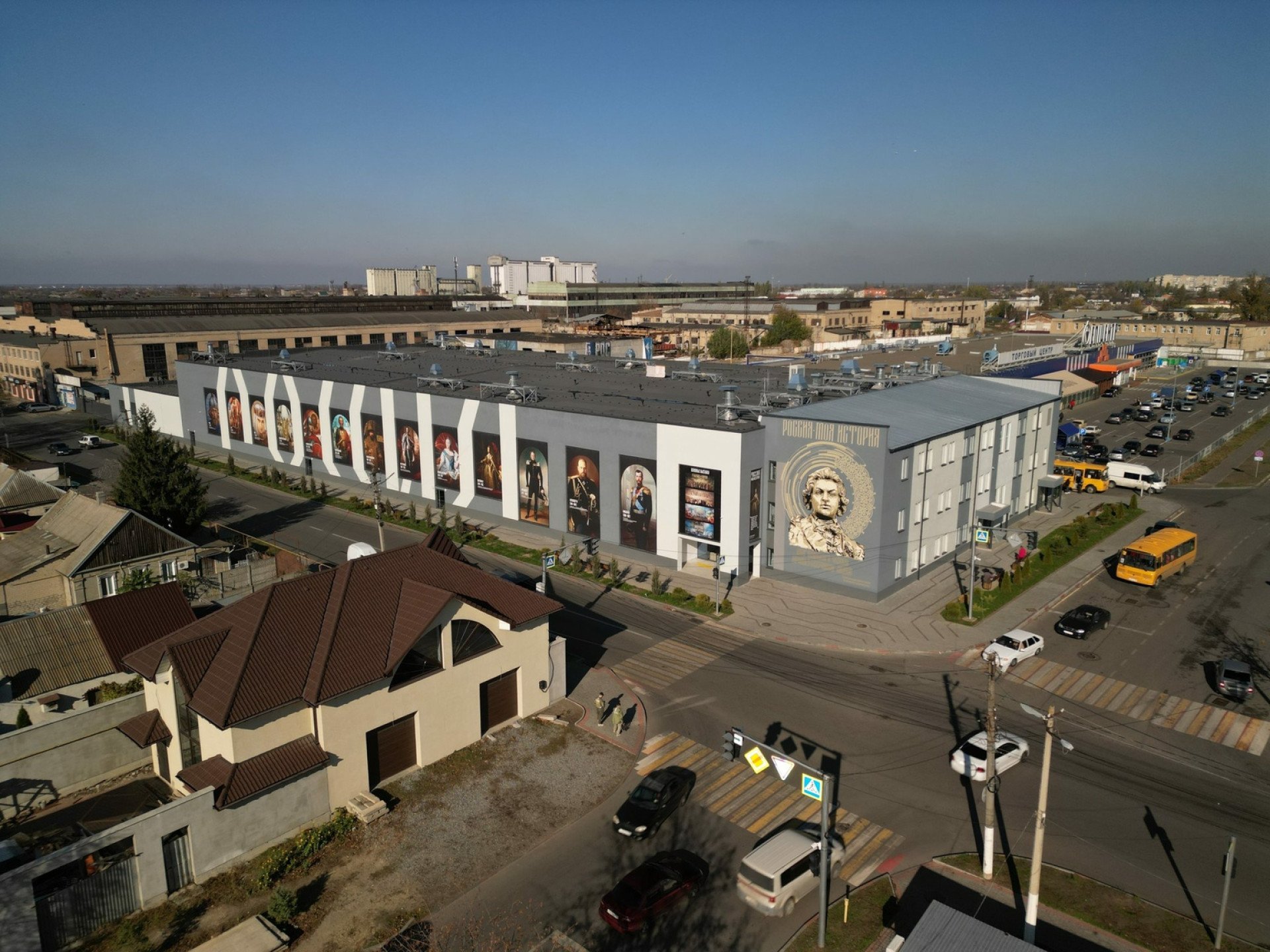
Many say that the second war on Chechnya was the breeding ground for Russian genocidal tactics used in Ukraine. Yet, in the present case, one thing is different: the workload of the Military Builders. Both the settlements in Novaya Zemlya and the military fortifications in Chechnya were created after the most active period of their colonization. But in Ukraine, the military builders moved to the frontlines like never before.
Based on the available information in the Military Builder journal, the first issue of which dates back to August of 2018, occupied Crimea, was the laboratory for these reformed ‘special’ construction crews. In Crimea and the rest of the temporarily occupied Ukraine before the full-scale invasion, the Russian MOD honed and sharpened this settler colonial tool, which would prove to be a game-changer in newly occupied territories by Russia from February of 2022 and onto today.
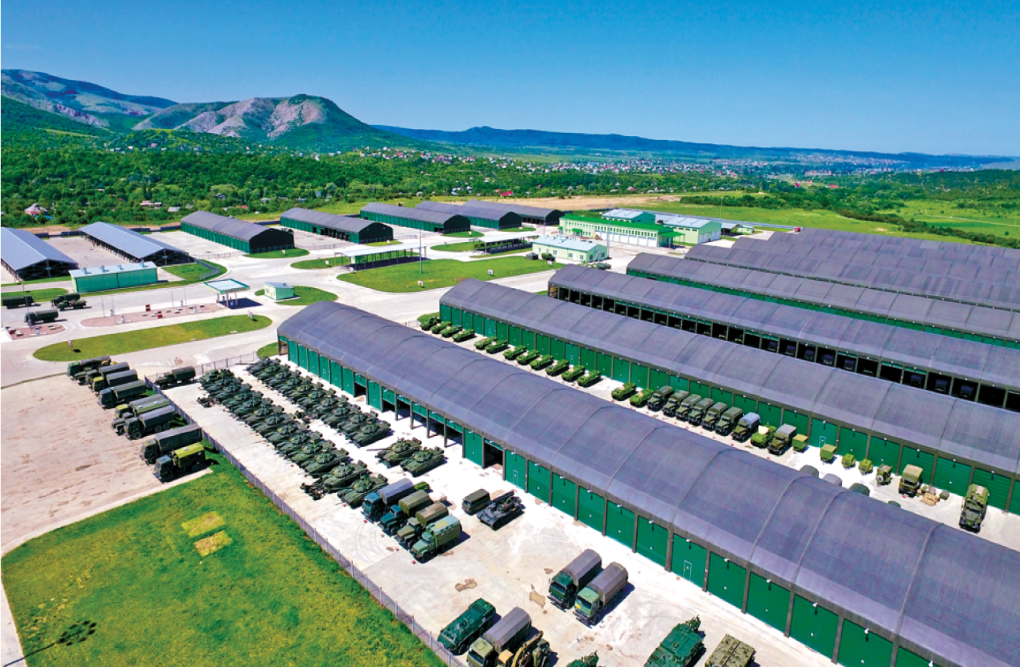
It would take a three-volume anthology to talk through all of the war crimes and settler colonial construction projects achieved on the backs of extremely accelerated labor of the military construction crews in Mariupol, Donetsk, Luhansk, and Kherson.
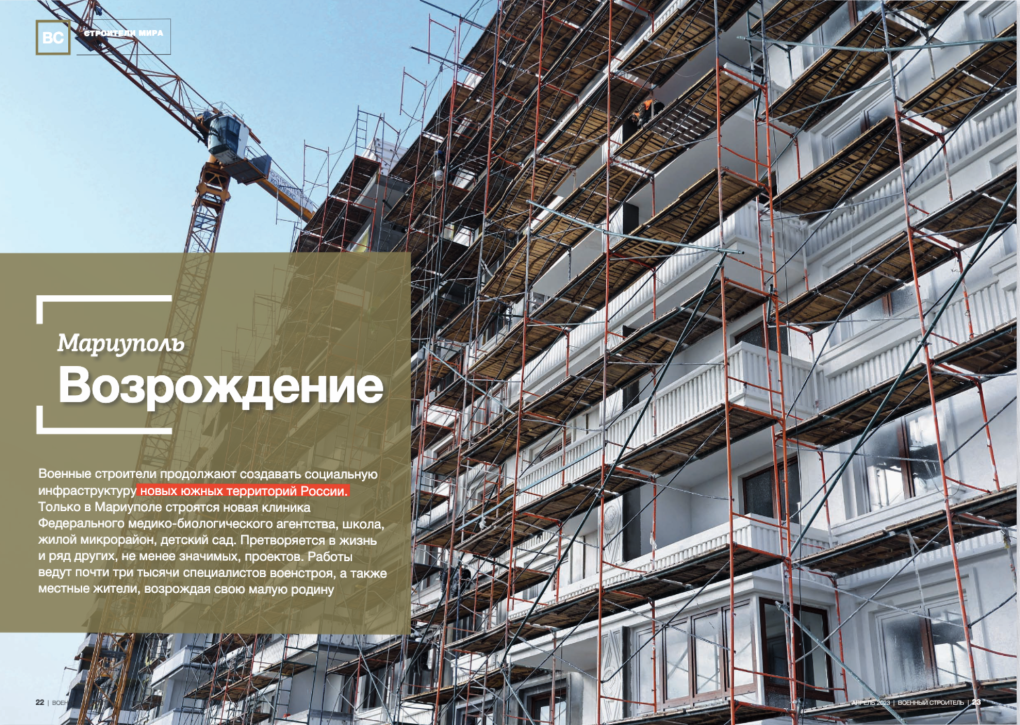
But to illustrate the terrifying speed of the Russian settler colonial machine, it is enough to look at the recently finished ‘history park’ in one of the regions of Ukraine partially occupied by Russia, the Zaporizhia region.
Much like was the case with Mariupol upon its occupation in 2022, in Zaporizhia the first goal of the Military Builders was the installation of colonial heritage markers. Melitopol became the de facto centre of the illegitimate occupational government as, to this day, the Russian forces are unable to fully occupy Zaporizhia thanks to the Armed Forces of Ukraine.
‘Russia—My History’ park is the first of its kind in the Russian-occupied territories of Ukraine; however, there are 25 similar objects in Russia. Standing in the center of occupied Melitopol, on the Interkul’turna Street, which was renamed by the illegitimate authorities of the occupation into Great Catherine Street, is a 6000-square-meter multimedia museum/park that tells of the (absolutely fabricated) history of the great Russian state, including the history of the Ukrainian territories Russia has occupied since 2014.
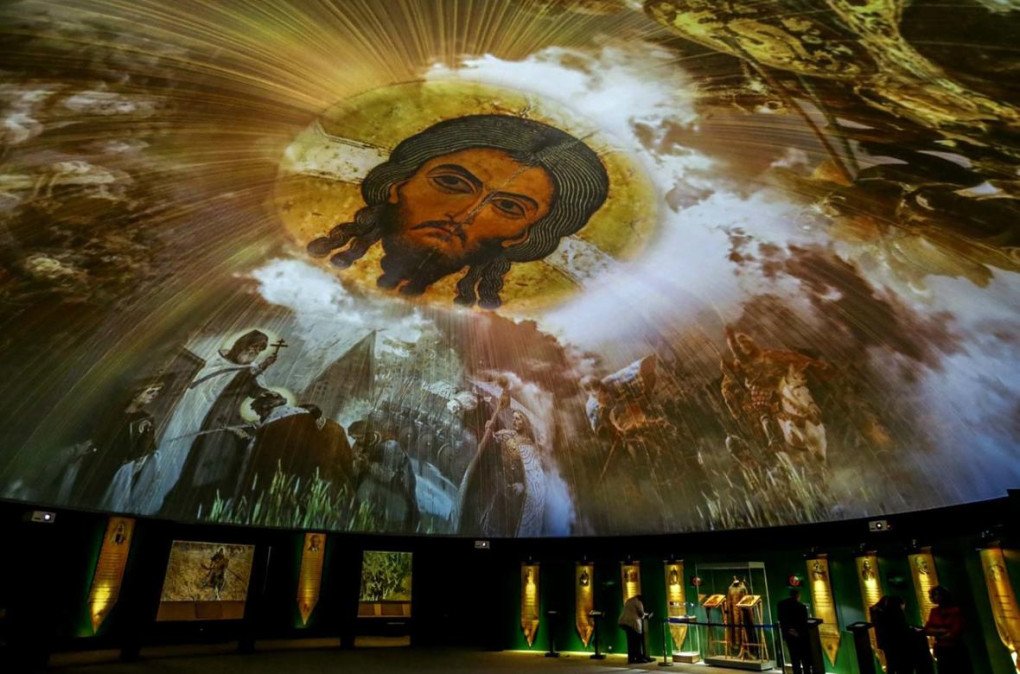
The decision to build this object in Melitopol is no doubt driven by the fact that Zaporizhia has seen some of the most fearsome pushbacks to Russian occupation by way of partisanship and protest of the local population. So, in some six months, as is told in the journal, 220 military builders, by working without rest, built what perhaps is one of the biggest colonial heritage objects in the world.
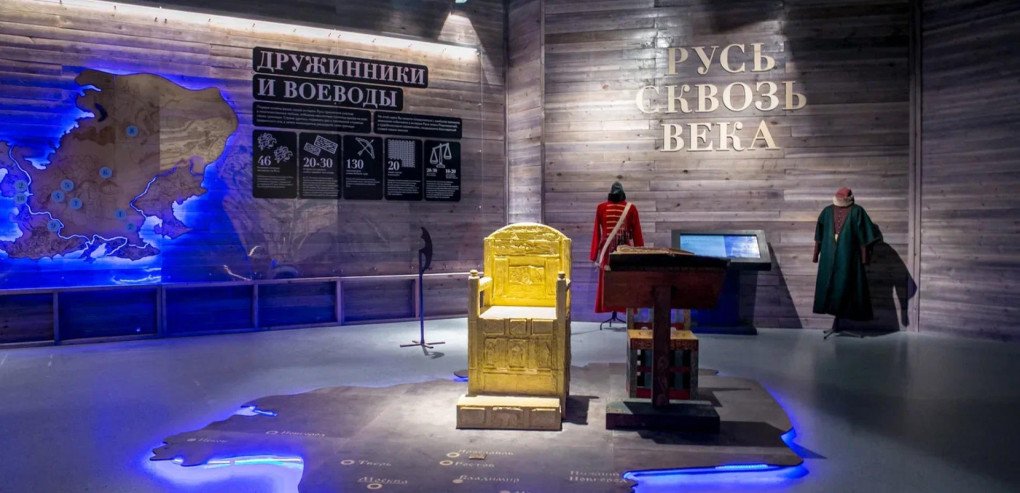
As of October 2023, the ‘history park’ was open and working, a year and a half after Melitopol was first occupied. Yet, of course, this would not end Ukrainian resistance to occupation. Thus, at the same time, other Military Builders in occupied Zaporizhia were focused on fortifying the frontline for the Russian military and accelerating the construction of military infrastructure at every newly occupied city and town.

To end this text in an illustrative manner, a rough translation of one excerpt from the December 2023 issue of the Military Journal would be in order.
“Not all secrets should be known. They don’t talk about it in public, don’t scream about it on the radio, and don’t write in the newspapers. Because it is about the crucial work in construction and creation of special infrastructure that the MOD’s Military Builders do. This labour is done by thousands of specialists which create a potent defensive shield for our country. Every day and night, without rest and holidays.
(…)
Here, we could present numerous modern fortifications, yet they won’t ever appear, and neither will the information on our rocket complexes, navy infrastructure, satellite tracking centers, and countless other special objects. Otherwise, it seems that all of the world’s intelligence services would become subscribers to our journal. But at least we can show our readers the most modern shooting range built by the military builders in Donbas. One of… Only one example.”
-c42261175cd1ec4a358bec039722d44f.jpg)
-46f6afa2f66d31ff3df8ea1a8f5524ec.jpg)
-6359eca46c72bde40a90abaaadd6eaa8.png)
-29a1a43aba23f9bb779a1ac8b98d2121.jpeg)


-206008aed5f329e86c52788e3e423f23.jpg)